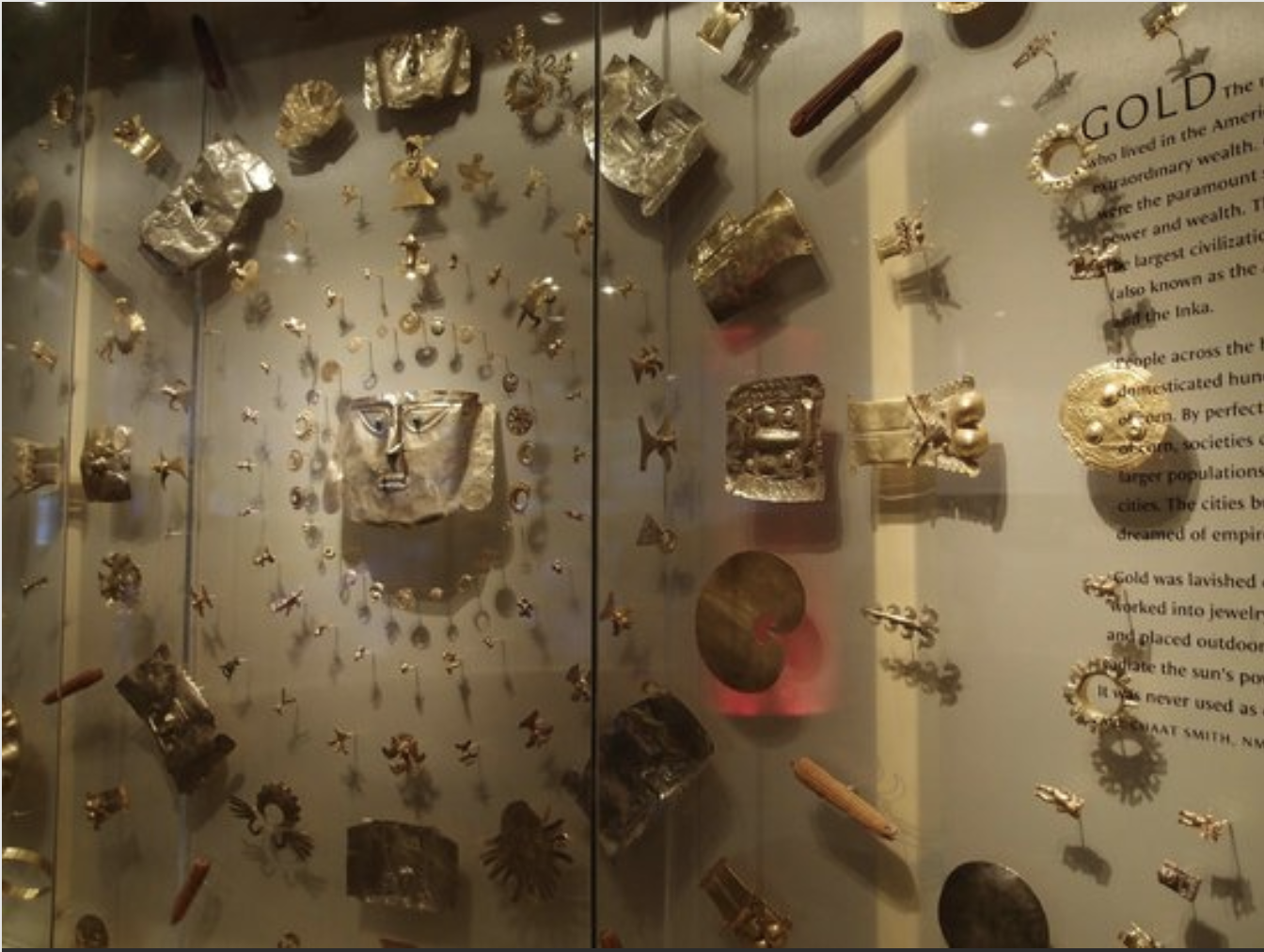 https://www.tripadvisor.com/LocationPhotoDirectLink-g28970-d493063-i65933842-National_Museum_of_the_American_Indian-Washington_DC_District_of_Columbia.html
https://www.tripadvisor.com/LocationPhotoDirectLink-g28970-d493063-i65933842-National_Museum_of_the_American_Indian-Washington_DC_District_of_Columbia.html
Jolene Rickard’s work is so far among the most fascinating that I have come across. Interestingly, it also revolves around the idea of museums conserving histories of ancient communities, documenting their stories with the very impressive collections of artifacts collected. The museum contained various interesting pieces but none caught my attention more than the massive gold collection shown as part of the museum, referred to as “The Gold Wall”. Jolene Rickard describes the method that this gold was obtained as a “crime against people who have nothing left to sell”.
The question of museums and their rights to native artifacts has been raised by Killmonger, Black Panther’s villain, when he was told that items in the museum were not for sale. His reply was strong as he stood his ground to ask, “How do you think your ancestors got it?(referring to an Ancient Wakandan Mask) You think they paid a fair price?”. This issue of museum and their ownership of communities’ artifacts has come up as one that raises intense debates in the interviews that I have recently conducted in response to Black Panther, and the responses I received have fueled my own response to Jolene Rickard’s video.
 https://me.me/i/museum-lady-im-sorry-these-items-arent-for-sale-killmonger-20771088
https://me.me/i/museum-lady-im-sorry-these-items-arent-for-sale-killmonger-20771088
Through conversations with friends and personal research, I have come to understand that there exists many examples that show museums’ ownership of ancient communities’ artifacts. For instance, as reported by reporters Mic reporters, British museums alone host the Egyptian Rosetta stone, the Greek Elgin Marbles, the Indian Koh-i-noor Diamond, the Egyptian Nefertiti Bust, the Turkish Old Fisherman, the Turkish Sion Treasure, the Iraqi Jewish artifacts, the Chinese Imperial Treasures, to mention but a few. All these treasures have been stolen from indigenous communities by the British and till this day, they are still confiscated by British museums…and sadly, this is but a drop in the ocean. Currently, there still exists more stolen treasures gloriously showcased in museums of the most powerful countries.
As much as I admire Jolene Rickard’s work, my questions regarding museums remain: What justice do we do to communities if we keep their treasures in our museums? Is the right home for artifacts such as the Gold Wall within the confines of museums or in its rightful communities, along with the descendants of their makers? What rights do we possess to other communities’ riches, cultures? And most importantly: If the only way we can “conserve” ancient communities’ histories is by literally confiscating their treasures from their descendants, are their histories worth being conserved?

